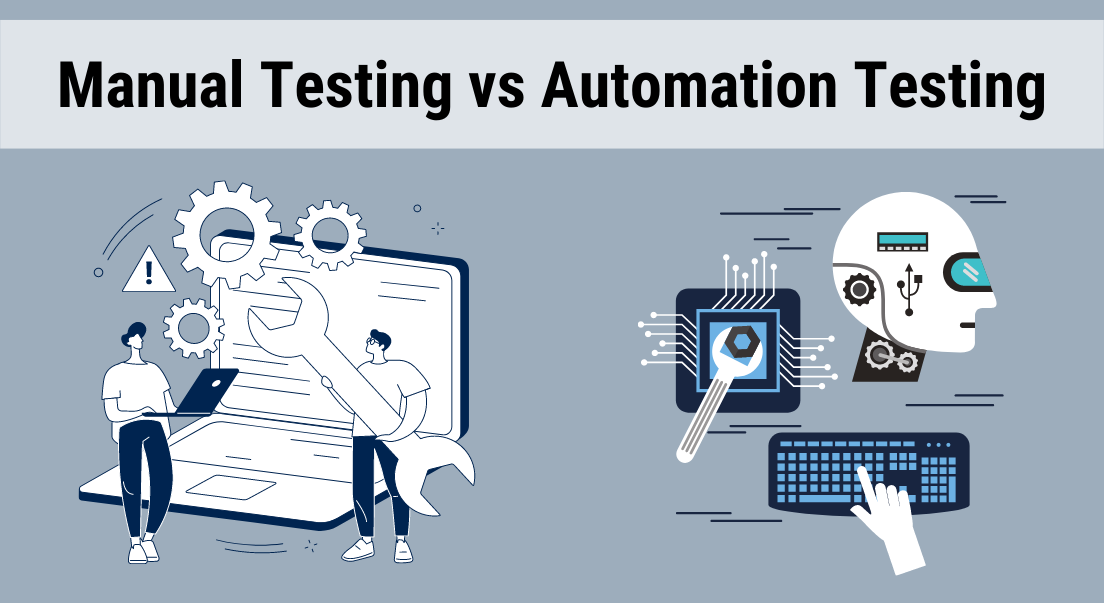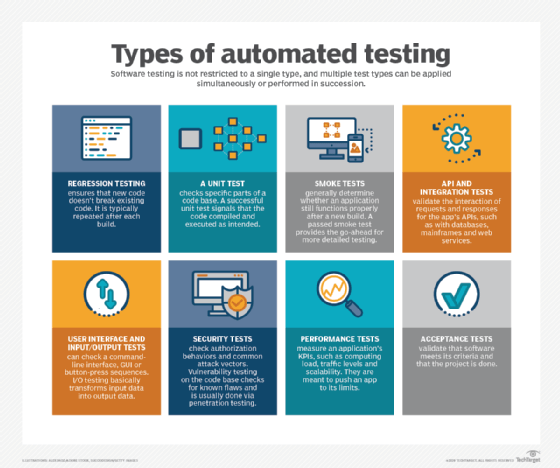Understanding Automation Testing: Devices, Methods, and Benefits
Understanding Automation Testing: Devices, Methods, and Benefits
Blog Article
From Guidebook to Automated Screening: A Comprehensive Overview to Transitioning Efficiently and Efficiently
In the realm of software screening, the change from guidebook to automated procedures has actually ended up being a significantly essential shift for companies looking for to improve efficiency and precision in their testing methods. The journey from handbook to automated testing is not without its challenges, but when approached tactically and with a clear plan in mind, the benefits can be considerable.
Benefits of Automated Evaluating
Automated screening offers numerous benefits, improving performance and accuracy in software growth processes. One primary advantage is the considerable reduction in testing time. Automated tests can be run concurrently on numerous devices and running systems, considerably accelerating the screening phase contrasted to manual screening. This increased efficiency permits faster feedback on the top quality of the software, allowing designers to recognize and resolve issues without delay.
Moreover, automated screening ensures a greater level of accuracy in identifying problems. Since automated tests adhere to predefined manuscripts, human mistake is lessened, resulting in even more reputable examination outcomes. Consistency in screening is likewise improved, as automated tests perform the very same actions exactly each time they are run. This consistency is crucial in making sure that all functionalities of the software are thoroughly tested, minimizing the chance of unseen bugs sliding through to production.
Choosing the Right Devices

First of all, analyze your requirements and purposes. Comprehend the range of your task, the technologies included, and the ability collection of your team. This evaluation will certainly assist you figure out the capacities and attributes you need in your testing devices.
Second of all, consider the compatibility of the devices with your existing systems and processes. Seamless integration with your present software advancement lifecycle is important to ensure a smooth shift to automation.
Additionally, examine the scalability and versatility of the tools. As your screening needs develop, the tools ought to be able to adapt and suit changes effectively.
Last but not least, variable in the support and community around the devices. When carrying out automated testing, robust support and an active customer community can give valuable sources and aid. By carefully thinking about these aspects, you can pick the right devices that align with your needs and established the stage for an effective shift to automated screening.
Creating Effective Examination Scripts

When crafting examination manuscripts, it is site vital to take into consideration the specific needs of the software program being examined and make sure that the scripts resolve all vital performances. Descriptive and clear calling conventions for examination scripts and test instances can enhance readability and maintainability. Furthermore, integrating error handling mechanisms within the test manuscripts can assist in determining and addressing problems quickly.
Moreover, arranging examination scripts into modular parts can boost reusability and scalability, reducing redundancy and improving efficiency in test manuscript maintenance. Routine testimonials and updates to evaluate scripts are vital to maintain pace with progressing software application demands and functionalities. By complying with these concepts, testers can produce robust and efficient test manuscripts that add substantially to the success of automated screening procedures.
Integrating Automation Into Workflows
Reliable assimilation of automation tools into existing operations streamlines processes and improves performance within software application advancement cycles. When incorporating automation into process, it is crucial to determine repeated tasks that can be automated to save time and lower human error. By effortlessly integrating automated testing tools like Selenium or Appium into the software application development lifecycle, groups can achieve faster feedback on code modifications, leading to quicker pest discovery and resolution. This integration enables continuous testing throughout the development procedure, making certain that any issues are determined early on, leading to higher software program top quality. Furthermore, automation can be made use of to activate tests immediately after each code dedicate, giving instant recognition and maximizing testers to concentrate on even more complex situations. Appropriate assimilation of automation devices requires cooperation in between growth, testing, and procedures groups to develop a unified operations that enhances effectiveness and efficiency in supplying high-quality software.
Ensuring a Smooth Shift
Successfully transitioning to automated screening involves content precise planning and mindful execution to reduce disruptions and take full advantage of efficiency in the software program growth process - automation testing. To make sure a smooth change, it is vital to begin by carrying out a comprehensive evaluation of the existing screening procedures and identifying areas where automation can bring the most substantial advantages. Engaging with all stakeholders early on in the procedure, including programmers, testers, and task managers, is critical for garnering assistance and buy-in for the automation effort
Communication is vital throughout this transition stage. Clear communication of the goals, advantages, and assumptions of automated screening helps to manage any kind of resistance or worries that may occur. In addition, offering sufficient training and sources for staff member to upskill in automation devices and techniques is essential for making sure an effective transition.

Verdict
Finally, transitioning from handbook to automated screening supplies many benefits, consisting of increased efficiency and reliability. By selecting the suitable devices, writing efficient test manuscripts, and integrating automation effortlessly right into workflows, organizations can make sure a successful and smooth shift. It is important to accept automation as a useful possession in software program screening procedures to enhance total quality and efficiency.
In the realm of software application testing, the shift from manual to automated processes has come to be a significantly essential transition for companies looking for to enhance effectiveness and precision in their testing methods. Automated tests can be run at the same time on several devices and operating systems, substantially speeding up the testing stage compared to hands-on screening. Uniformity in testing is additionally enhanced, as automated tests implement the same actions precisely each time they are run.To make certain the successful implementation of selected screening tools, the development of efficient test scripts plays a critical role in validating the functionality and efficiency of automated procedures - automation testing. By adhering to these principles, testers can develop find out here now efficient and robust test manuscripts that contribute substantially to the success of automated testing processes
Report this page